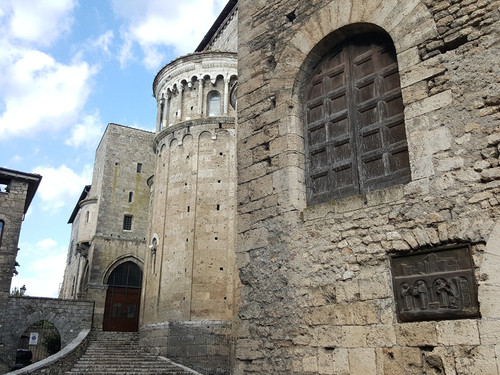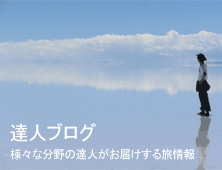Hello bloggers,![]()
have you ever been to Anagni? Perched on a hill between the mountains Ernici and dominating the valley of the Sacco, it is an Italian town in the province of Frosinone, 70 km from the center of Rome.![]()

It is famous for being the birthplace of four famous popes (Innocent III, Alexander IV, Gregory IX and Boniface VIII) and, for a long time, for being the papal residence and headquarters. For this reason it is named “the city of the Popes”.
In the medieval center, made of elegant buildings, of Romanesque churches, steeples, loggias and intimate squares, there are, of great interest, the thirteenth-century palace of Boniface VIII, the town hall and numerous churches, among them the Cathedral, with its splendid crypt whose frescoes are among the most interesting pictorial cycles of the thirteenth century in Italy.

The legend includes the ancient Anagni between the five cities of Ciociaria founded by the god Saturn (with Alatri, Arpino, Atina and Ferentino). It took later part of the Roman Empire from 306 BC, and then in the thirteenth century fell under the rule of a noble family of the time.
In this period it gave to the Church four popes and became the papal residence, worthy with the name “City of the Popes” (Innocent III, Alexander IV, Gregory IX and Boniface VIII). Following the return of the popes in Rome, the city suffered a sharp decline.
Later the town was the scene of fights and disputes and became part, at the end of 1700, of the Roman Republic.
But the Anagni Medieval face suffered more serious damage during World War II, due to the bombing that led to the partial destruction of the city.
In the mid-twentieth century, there was the tourism expansion in Anagni and in the nearby town of Fiuggi, famous for its thermal waters.
Despite the deep wounds of history, Anagni is increasingly a popular destination for cultural and environmental tourism. Tourists will come to admire the beautiful and famous medieval monuments. Its historical center, in which precious works of art and architectural elements combines, in a unique harmony, with many characteristic views.
One of the most famous monuments of Anagni, is the elegant Palace of the Popes (or Palace of Boniface VIII), built in the Gothic style in the early decades of the thirteenth century. Its facade is adorned with mullioned windows and a porch with round arches. The halls of the palace, open to visitors, offer a great documentation of the past, with a simple set-up of the interior that enhances primarily the ancient frescoes.

There is also the Cathedral of Santa Maria, of the twelfth and thirteenth centuries. It is a source of pride for Anagni, situated in the charming Piazza Innocent III, one of the most beautiful squares in the Lazio, a kind of living room to sit and enjoy an aperitif admiring the architectural wonders.
On the construction of the Cathedral, there is a legend that refers directly to a curious relief portraying an ox and a wolf sculpted in grotesque forms. The story is about an ox that, while pulling a cart containing a few stones, necessary to the building of the church, was attacked by a ferocious wolf. This wolf was pacified and persuaded to support the ox, its victim, in its hard task.

The beauty of the external structure and the magnificent apses of the Cathedral, which dominate imposing the wide-open space, represent a true architectural masterpiece. Even the tall bell tower, adorned with mullioned windows, is a symbol of the town. The Crypt of San Magno, in fact, is to be considered as another masterpiece of Anagni in Middle Ages. It is beautifully covered with frescoes depicting various biblical topics (including the Genesis and the Last Judgement). It was rightly called the “Sistine Chapel of the thirteenth century”.
The charm of the place and the beauty of the frescoes cannot be photographed, so I recommend you go in person to visit it ![]()

Attached to the Cathedral there is also an interesting museum which preserves an ancient reliquary of St. Thomas.
In Anagni, always relatively to the Middle Ages, we have to give as well a considerable architectural value to the beautiful Town Hall, built in 1159-60 and designed by an architect from Brescia (but later renovated in Gothic style). It is formed by the juxtaposition of two existing buildings connected by an imposing portico on which rests the great “Hall of Reason”, in which representatives of the city met.
The porch prefaced the access to the behind “Piazza Comunale”, in which there were the market and the administration of justice.

In Anagni there are many things to see, I suggest you to visit it and enjoy your trip in one of the many villages in Italy: they are all small jewels, rich in artistic and cultural heritage.![]()
![]()
How to get to Anagni![]()
![]()
![]()
By car: to get to Anagni you can follow the exit “Anagni” located along the A1 Milan-Naples, about 16 km from the junction of southern Rome. Or by the S.S.6. Casilina and S.S.155 via Anticolana that links the Anagni motorway tollbooth to the Fiuggi thermal center.
By train: Anagni is also accessible by train via the railway line Rome-Cassino-Naples.
Thank you for reading!![]()
Guenda



 テーマ: By Italian Staff
テーマ: By Italian Staff












